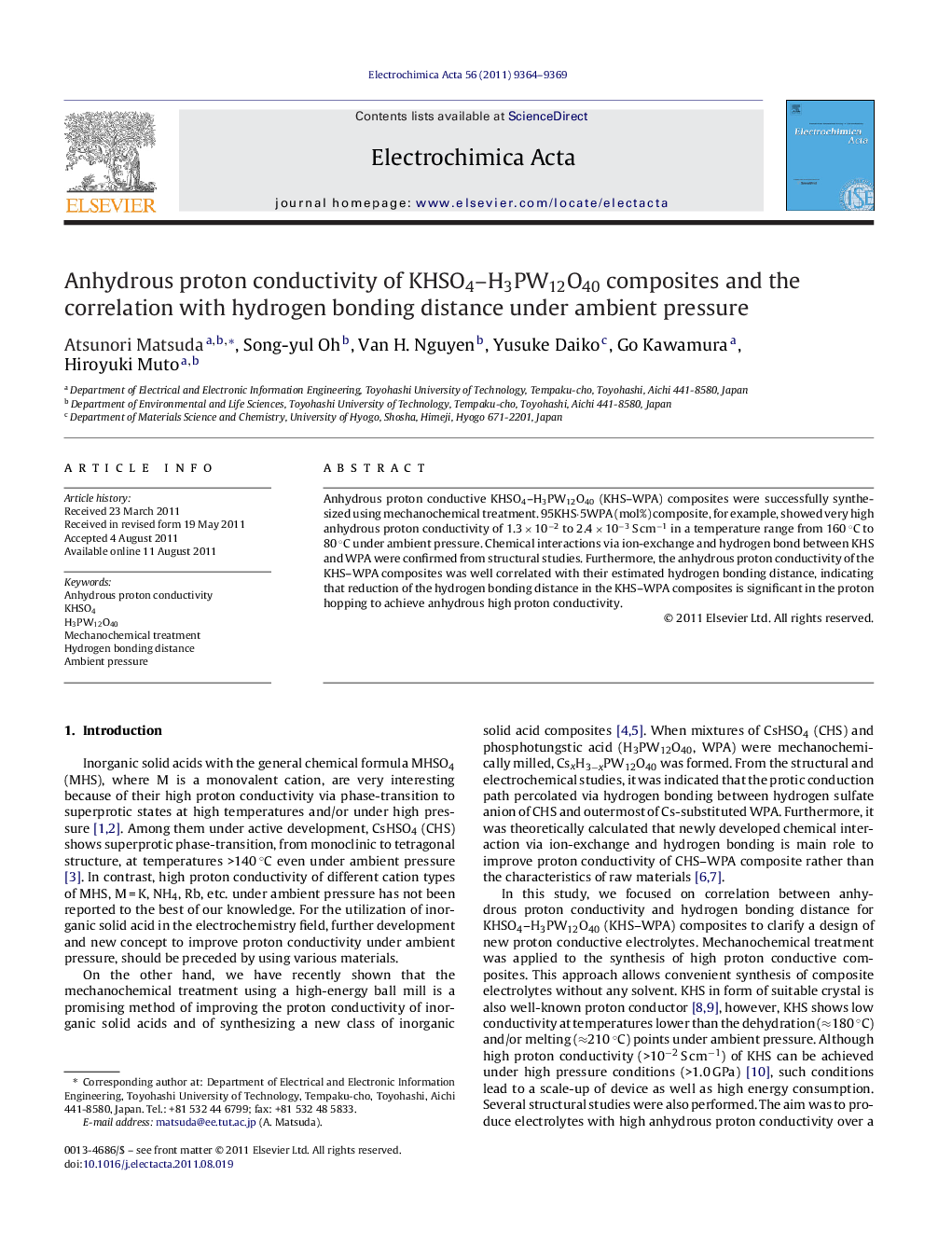| کد مقاله | کد نشریه | سال انتشار | مقاله انگلیسی | نسخه تمام متن |
|---|---|---|---|---|
| 189440 | 459679 | 2011 | 6 صفحه PDF | دانلود رایگان |

Anhydrous proton conductive KHSO4–H3PW12O40 (KHS–WPA) composites were successfully synthesized using mechanochemical treatment. 95KHS·5WPA (mol%) composite, for example, showed very high anhydrous proton conductivity of 1.3 × 10−2 to 2.4 × 10−3 S cm−1 in a temperature range from 160 °C to 80 °C under ambient pressure. Chemical interactions via ion-exchange and hydrogen bond between KHS and WPA were confirmed from structural studies. Furthermore, the anhydrous proton conductivity of the KHS–WPA composites was well correlated with their estimated hydrogen bonding distance, indicating that reduction of the hydrogen bonding distance in the KHS–WPA composites is significant in the proton hopping to achieve anhydrous high proton conductivity.
► Mechanochemical synthesis of KHSO4–H3PW12O40 (KHS–WPA) composites as an electrolyte.
► Anhydrous proton conductive electrolytes for fuel cells.
► Chemical interaction via ion-exchange and hydrogen bond between KHS and WPA.
► Correlation between anhydrous proton conductivity and hydrogen bonding distance.
► Reduction of hydrogen bonding distance improves anhydrous proton conductivity.
Journal: Electrochimica Acta - Volume 56, Issue 25, 30 October 2011, Pages 9364–9369